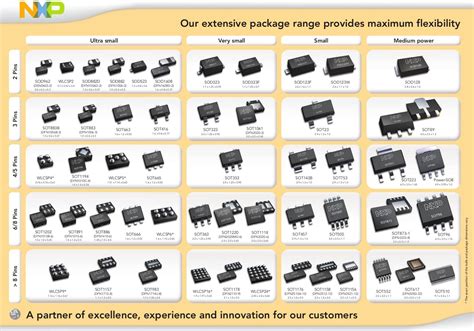Introduction to SMD Propulsion Technology
Surface Mount Device (SMD) propulsion technology has revolutionized the aerospace industry by offering compact, lightweight, and efficient solutions for spacecraft and satellite propulsion systems. This comprehensive guide will delve into the various aspects of SMD propulsion technology, its applications, advantages, and future prospects.
What is SMD Propulsion Technology?
SMD propulsion technology refers to the use of miniaturized thrusters and propulsion systems that are surface-mounted on spacecraft or satellites. These devices are designed to provide precise and controllable thrust for attitude control, orbit maintenance, and maneuvers.
Advantages of SMD Propulsion Technology
- Compact size and low mass
- High efficiency and specific impulse
- Precise thrust control
- Reduced power consumption
- Compatibility with various propellants
Types of SMD Propulsion Technologies
Electric Propulsion Systems
Hall Effect Thrusters (HETs)
HETs utilize an electric field to accelerate ionized propellant, producing high specific impulse and efficiency. They are widely used for station-keeping and orbit raising maneuvers.
| Parameter | Value Range |
|---|---|
| Power | 100 W – 10 kW |
| Specific Impulse | 1000 – 3000 s |
| Thrust | 10 mN – 1 N |
Ion Engines
Ion engines use electrostatic forces to accelerate ionized propellant, delivering high specific impulse but low thrust. They are suitable for deep space missions and precise attitude control.
| Parameter | Value Range |
|---|---|
| Power | 100 W – 5 kW |
| Specific Impulse | 2000 – 10000 s |
| Thrust | 1 mN – 500 mN |
Chemical Propulsion Systems
Monopropellant Thrusters
Monopropellant thrusters rely on the decomposition of a single propellant, such as hydrazine, to generate thrust. They offer simplicity and reliability for attitude control and small delta-V maneuvers.
| Parameter | Value Range |
|---|---|
| Thrust | 0.1 N – 1000 N |
| Specific Impulse | 150 – 250 s |
Bipropellant Thrusters
Bipropellant thrusters utilize the reaction between an oxidizer and fuel to produce thrust. They provide higher performance compared to monopropellant systems and are used for larger spacecraft and more demanding missions.
| Parameter | Value Range |
|---|---|
| Thrust | 1 N – 10000 N |
| Specific Impulse | 200 – 450 s |
Applications of SMD Propulsion Technology
CubeSats and Small Satellites
SMD propulsion systems are ideal for CubeSats and small satellites due to their compact size and low power requirements. They enable precise attitude control, orbit maintenance, and formation flying.
Constellation Missions
Large satellite constellations benefit from SMD propulsion technology by allowing efficient station-keeping and collision avoidance maneuvers. The scalability and modularity of SMD thrusters make them suitable for mass production and integration.
Interplanetary Missions
High-efficiency electric propulsion systems, such as ion engines and HETs, are crucial for deep space missions. They provide the necessary delta-V for orbit transfers, trajectory corrections, and rendezvous with distant celestial bodies.

Challenges and Future Developments
Miniaturization and Integration
The ongoing miniaturization of SMD propulsion components presents challenges in terms of manufacturing, assembly, and testing. Advancements in materials science, micro-electromechanical systems (MEMS), and additive manufacturing techniques are expected to further optimize the size and performance of SMD thrusters.
Propellant Management
Efficient propellant storage, feed systems, and control valves are critical for the success of SMD propulsion systems. Research focuses on developing advanced propellant management technologies, such as micro-fluidic devices and zero-leak valves, to ensure reliable operation in space environments.
Alternative Propellants
The search for alternative propellants aims to enhance the performance, safety, and environmental sustainability of SMD propulsion systems. Promising candidates include green propellants, such as AF-M315E and LMP-103S, which offer higher density and lower toxicity compared to traditional hydrazine-based propellants.
Frequently Asked Questions (FAQ)
-
Q: What are the key advantages of SMD propulsion technology over traditional propulsion systems?
A: SMD propulsion technology offers several advantages, including compact size, low mass, high efficiency, precise thrust control, and reduced power consumption. These characteristics make SMD thrusters ideal for small satellites, constellation missions, and deep space exploration. -
Q: How do electric propulsion systems differ from chemical propulsion systems in SMD technology?
A: Electric propulsion systems, such as ion engines and Hall Effect Thrusters, use electric fields to accelerate ionized propellant, resulting in high specific impulse but low thrust. Chemical propulsion systems, like monopropellant and bipropellant thrusters, rely on chemical reactions to generate thrust, offering higher thrust levels but lower specific impulse. -
Q: What are the main challenges in the development and implementation of SMD propulsion technology?
A: The main challenges include miniaturization and integration of propulsion components, efficient propellant management, and the development of alternative propellants. Overcoming these challenges requires advancements in materials science, micro-fabrication techniques, and propellant storage and feed systems. -
Q: How can SMD propulsion technology benefit interplanetary missions?
A: High-efficiency electric propulsion systems, such as ion engines and HETs, are crucial for interplanetary missions. They provide the necessary delta-V for orbit transfers, trajectory corrections, and rendezvous with distant celestial bodies, while minimizing propellant consumption and extending mission lifetimes. -
Q: What are the future prospects for SMD propulsion technology?
A: The future of SMD propulsion technology is promising, with ongoing research and development efforts aimed at further miniaturization, performance optimization, and the use of alternative propellants. As the demand for small satellites and deep space exploration grows, SMD propulsion systems will play an increasingly important role in enabling advanced space missions and expanding our understanding of the universe.
Conclusion
SMD propulsion technology has emerged as a game-changer in the aerospace industry, providing compact, efficient, and precise propulsion solutions for a wide range of space applications. From CubeSats and small satellites to constellation missions and interplanetary exploration, SMD thrusters offer unparalleled performance and versatility.
As the technology continues to evolve, advancements in miniaturization, propellant management, and alternative propellants will further enhance the capabilities of SMD propulsion systems. By leveraging these innovations, the space industry can unlock new possibilities for scientific discovery, commercial ventures, and the exploration of the final frontier.






Leave a Reply